31 October 2019
This month we are interviewing Ms Marcela-Daniela Costea, the current General Manager of the Maritime Danube Ports Administration (APDM) Galati. In what follows, Ms Costea tells us how she got into the maritime transport sector, the main investment projects in her port, what it means to be a member of ESPO, her message to the new Transport Commissioner and many more interesting topics.
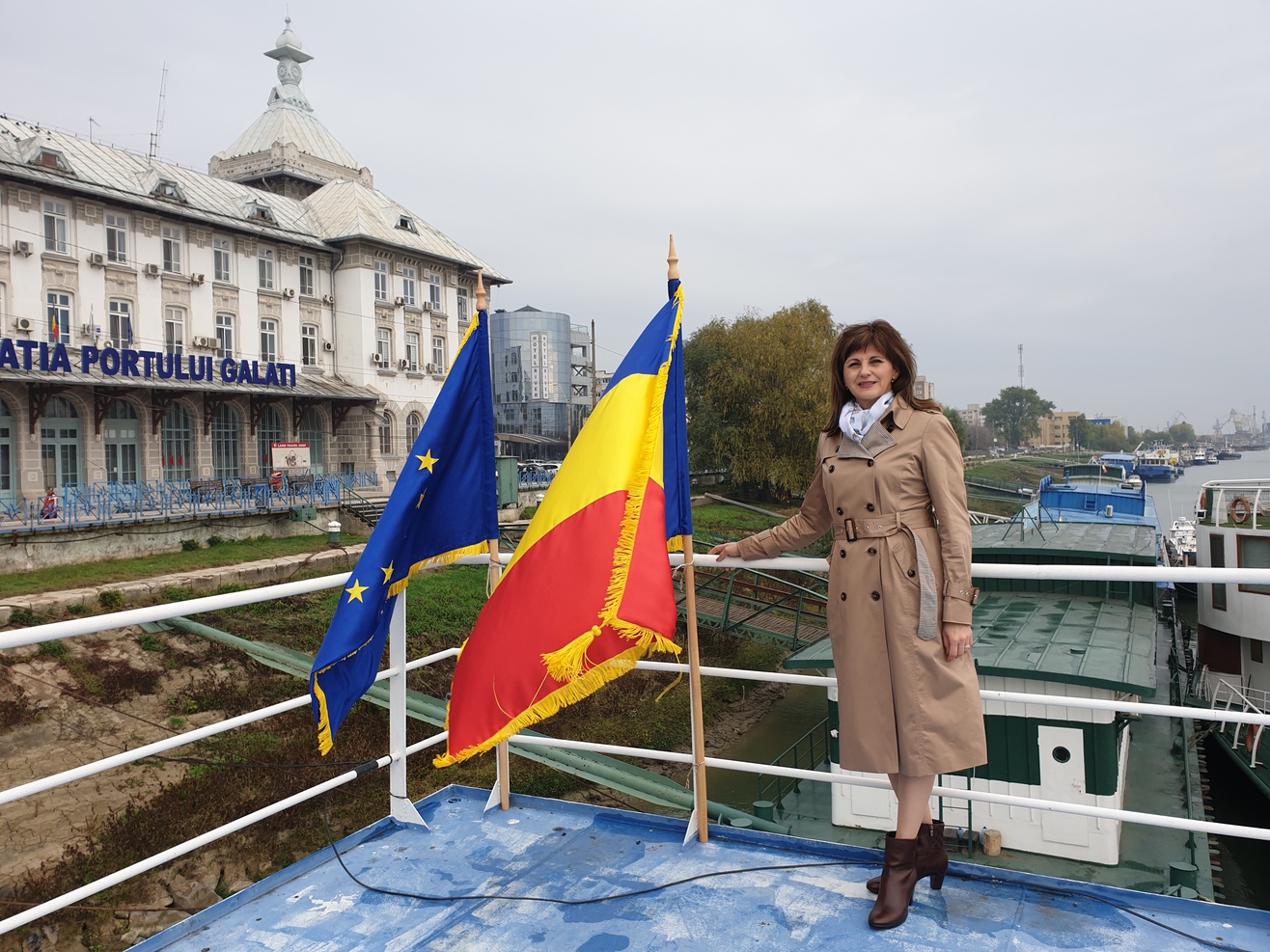
Can you briefly present the Maritime Danube Ports Administration (APDM) Galati? What are its main characteristics and challenges?
NC MDPA is a company established through the Government Decision no. 518/1998 that fulfils the role of administrator of the port infrastructure and port authority in the ports under its jurisdiction. It operates under the authority of the Ministry of Transport and carries out activities of national public interest according to the legal regulations in force.
NC MDPA fulfils the position of administrator of the shipping infrastructure belonging to the public domain of the state that was conceded to it by the Ministry of Transport based on a concession contract.
The company manages the port infrastructure located on the maritime Danube, respectively land port and ship mooring fronts, including Galati, Braila, Tulcea, Harsova, Isaccea, Mahmudia and the secondary branches of Macin, Chilia and Sf Gheorghe.
The National Company Maritime Danube Ports Administration Galati functions as concessionaire for administering public domain and exercising its prerogatives through:
- Making the mooring berth available for river and maritime ships;
- Land-lease to port operators;
- Waste management from ships;
- And other port services.
The main ports on the river-sea sector of Danube are Port of Galati (core TEN-T port), Braila and Tulcea (comprehensive TEN-T ports). Port of Galati is located in South-East Romania, on the border between Romania and Moldova, and has a strategic geopolitical position in the Middle East-European area. The Port of Galati is a core TEN-T port on the Rhine-Danube corridor and ranks as second Romanian port after Constanta.
The Port can accommodate inland vessels of all categories and maritime vessels up to 7,3 m draft. The port can receive and deliver freight by road, rail, maritime transport and inland waterways.
The Strategy of NC MDPA for Galati Port is for the Port to become the main logistic hub in the South-East Europe, as well as feeder port for the Port of Constanta.
Port of Braila is one of the biggest transshipment zones for grains as it is located in the middle of the largest agricultural area of Romania. Being located only 20 km from the Port of Galati, both ports can operate more than 20 million tonnes.
Port of Tulcea is the main passenger and touristic port on the Danube and the entrance point to the Danube Delta area. It also operates as bulk and general cargo port at the regional level.
The company’s mission is also to develop and promote ports in the maritime sector of the Danube, to integrate them into river, sea, road and rail transport routes, to promote inland waterway-maritime trade by providing competitive port services which respect the community and the environment and are in line with European Union standards.
How did you get into maritime transport? How did your career path lead to this position?
I worked for many years in the Commercial Department of the largest Romanian integrated iron and steel plant, ArcelorMittal Galati, and afterwards as head of by-products department. I was dealing with import-export contracts of raw materials, spare parts, refractory materials for steel production as well as finished products (hot and cold rolled steel galvanized, steel plates) and by-products. While handling import-export contracts, I followed-up the entire supply chain for the integrated iron and steel works, also through the ports managed by the CN APDM SA Galati.
Subsequently, I took up a new professional challenge. I started working as a consultant for the LNG Masterplan for the Rhine-Main-Danube project, which was approved by European Commission in 2012. The activities were related to the preparation of the Prefeasibility Study and the Preliminary Technical Concept for the Liquefied Natural Gas Terminal in the maritime Danube area.
Somehow, during the years, my career path crossedport administration activities. I started working in the department of European projects of the company and subsequently became the chief of the department. Currently, as General Manager, I am managing all the activities of the port administration.
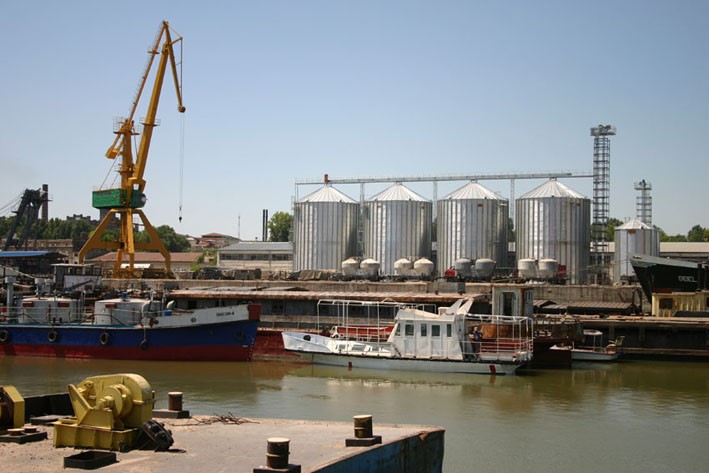
The Port of Galati considers itself both a maritime and an inland port. Could you explain how the port can be considered as both a maritime and inland port? Can you tell us the importance of the Danube river for the port? Can you also briefly describe in which other ways the port is connected to the hinterland?
The Port of Galati is the largest sea-river port, and second largest port in Romania, with access to the Danube maritime sector and the Black Sea through the Sulina channel and the Danube-Black Sea channel. The Port of Galati is located on the left bank of the Danube and is managed by the National Company Maritime Danube Ports Administration JSCo Galati.
The Port of Galati can accessed by river and sea vessels (max. 15,000 DWT). However, the capacity and draught of ships admitted to operation and which may reach the port are conditioned by the minimum depth of the Danube recorded at the Sulina channel.
The Danube is essential for the economic development of Galati. The Port of Galati is an important source of income for the city, as it has attracted many national and international companies that are operating here.
The Port of Galati is well connected to the hinterland by road and by rail, and to the Port of Constanta through the Danube-Sulina channel.
Due to its strategic position on the Danube and as a hub for the eastern countries bordering the Black Sea and for European countries without maritime access, the location of Galati port proves to be ideal in terms of connecting the river and sea navigation with the hinterland, through rail and road transport.
The Port of Galati hosts a Free Zone. Could you explain the features of the Free Zone? What is the importance of this Free Zone for the port?
The Galati Free Zone is located in the south-eastern part of Romania, close to the city of Galati and on the Danube river shore, at a small distance from the Black Sea and near the border with Ukraine and Moldova.
The Galati Free Zone boasts the following features:
- Great strategic position on the eastern border of the European Union, with quick and efficient access to markets all over Europe and the Orient;
- Easy access to all modes of transport (road, rail, air, inland waterways, maritime) and also near all kind of utilities (water, sewage, electric power, methane gas);
- Availability of land for any kind of investment projects at competitive rates;
- Favorable economic and fiscal conditions;
- High standards and an open-minded approach to ideas and proposals coming from our clients.
Important economic points of national and international interest are located close do Galati Free Zone, such as:
- Liberty Galati, the largest integrated steel plant in the country and leader in manufacturing metallurgical products, with a current production capacity of 2 million tons of steel;
- DAMEN Shipyard, the second shipyard in terms of importance and work volume in Romania, capable of constructing various types of maritime ships;
- Galati Harbour, the biggest river-maritime harbour in Romania.
Galati Free Zone is an important depositing, bonded-warehousing and transit point between European and Oriental markets, and, an important commercial point that serves millions of customers.
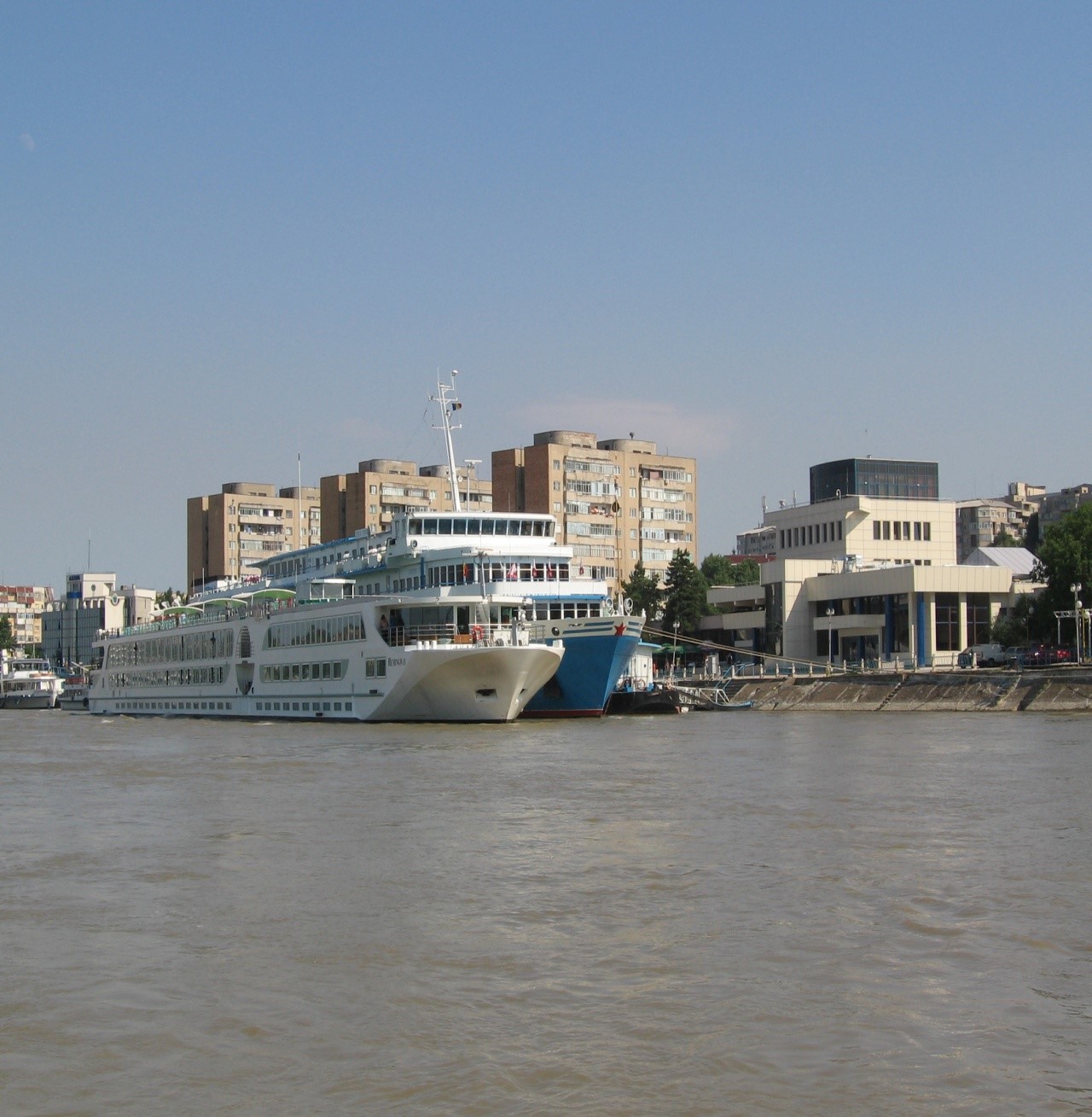
The Port of Galati is part of the Rhine – Danube Corridor of the Trans-European Transport Network (TEN-T). How has the port benefitted from being part of this Corridor? Has the port successfully applied for any projects?
Due to its location on one of the corridors of the TEN-T central network, the port of Galați has become a central point of European policies, strategies and programmes that have the development of the central network by 2030 as priority. An essential element for the development of the Port of Galați is thus financing available through European-funded programmes and managed at national, regional or European level, oriented towards the development of maritime and river transport as a sustainable mode of transport.
The Project “Galati Multimodal Platform - removing major bottlenecks by upgrading existing infrastructure and ensuring the missing connections for the Rhine-Danube / Alps central network” includes four EU-funded sub-projects corresponding to the identified investment objectives, namely:
- Upgrade of the port infrastructure (stage I);
- Upgrade of the road infrastructure in the Multimodal Platform area to remove traffic jams and relocation of a railway segment to streamline the railway traffic in the port area (stage II);
- Reorganisation and rebuilding of the handling and storage area for efficient technological flow in the platform (stage III);
- Creating new access to the handling and storage area for compliance with European safety and security rules (stage III).
The four sub-projects mentioned above are connected with each other, and the final objective of the terminal resulting from the implementation of all four sub-projects is to cover the demand by 2030, as identified on the basis of the traffic analysis. Furthermore, we should mention that the terminal will be equipped to handle different types of intermodal loading units, the relevant market being that of freight containers.
We underline that the proposed project is a pre-identified project on the Rhine-Danube Corridor. At the same time, it is also a national priority, being identified in the Master Plan of Transport (MPT). The project enhances the efficiency of the TEN-T network by eliminating bottlenecks, improving the interconnection and interoperability of national transport networks and by optimally integrating/interconnecting the four modes of transport (rail, road, river and maritime).
In the Black Sea region, both EU member states and third countries are competing. What are the challenges or opportunities your port is facing with adjacent third countries?
The non-EU countries in the Black Sea basin with which Romania has developed trade relations are Ukraine, Georgia and Turkey. Opportunities for the development of trade and, implicitly, of the relations between the ports managed by MDPA and the ports of these countries consist in their inclusion in the logistics chains that Galati Port is part of. For example, the logistics chain that connects West-China with Central Europe can include both Poti Port (Georgia) and Istanbul Port (Turkey).
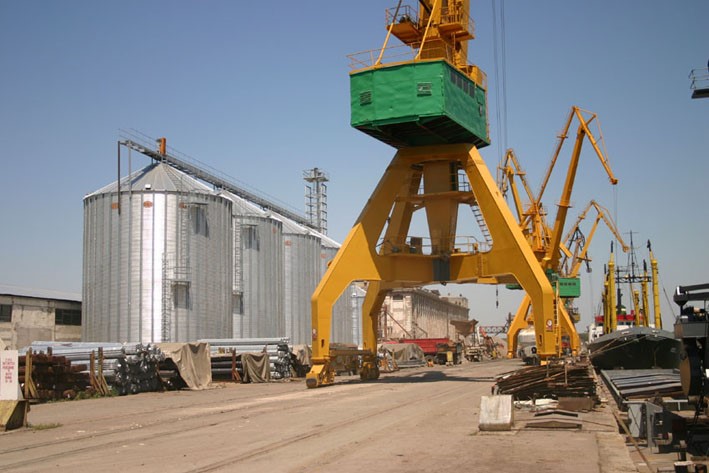
What are the main focal points of the Port of Galati’s environmental policy?
The environmental policies of the European Union aim at sustainable development and draw attention to the threats posed by marine pollution and also inland waterways, caused mainly by human actions. EU member states must act on the principle of preventive action and remediation of environmental damage as well as on the "polluter pays" principle. According to legal provisions, NC MDPA Galati, as a port authority and as authority with powers delegated by the Romanian state, has the obligation to provide port facilities for the collection of waste and waste generated by ships and to participate in disaster interventions, including pollution.
For the exercise of these duties, NC MDPA Galati owns the technical and specialised means, which are organised in an integrated environmental system that was implemented from 2010 to 2014 through the CODENAV project funded by the Operational Program for Transport, Priority Axis 3 “Modernisation of the transport sector in order to improve the environment, human health and of passenger safety”. The system covers the three main ports of Galați, Brăila and Tulcea, answering to almost all the requirements provided by the current regulatory framework.
The system aims to reduce the negative impact on the environment caused by maritime transport and inland waterway activities by creating a system for collecting waste generated by ships in ports on the Danube. The equipment is considered as crucial for the protection of the environment, for ensuring sustainable transport and for creating the necessary conditions for maintaining and improving the water quality of the Danube.
At present, the integrated environmental system of NC MDPA Galati is composed of: 10 technical vessels which perform various functions such as collecting hydrocarbon residues and household waste, and packaging and contaminated materials resulting from the activity on board ships and hydrocarbon residues from the surface of the water in case of accidental pollution, 3 special waste collection trucks, and 4 platforms for collecting and storing waste. On board ships, residues and waste can be stored temporarily and hydrocarbon water can be processed by primary separation.
In order to protect the environment and encourage ships to handle waste, NC MDPA Galati applies an indirect pricing system. The indirect charging is limited to a certain amount of waste that can be delivered free of charge, and the additional quantities are charged based on the special tariffs for waste collection. This system has unified the application of the legislation in the field for maritime and inland waterways shipping, and the tariffs are established in a transparent, objective, and non-discriminatory way, are proportional to the service provided and in compliance with competition rules.
Acting according to the international and national strategies of protection against the depletion and degradation of the environmental resources, NC MDPA Galati elaborated a plan for taking over and managing waste in its area of activity. The plan’s main purpose is to reduce the discharge of the waste generated by ships in the Danube waters, but also offers efficient action in order to prevent, stop, limit and neutralise the effects of unwanted events caused by damage, accidents or even due to negligence.
The theme of this years’ ESPO Award, which will be handed out on 13 November in Brussels, is “Transparency and the role of social media in reaching out to the local community.” Which initiatives are you taking in order to enhance the relationship with the local community?
The port administration has developed a stakeholder communication plan, whose objective is to implement measures that will allow the management of the Port of Galati to communicate and cooperate effectively with members of the port community, business partners and other stakeholders, in order to sustain the development of the port.
For the development of a regional port, the focused and coordinated action of several stakeholders who may have a significant impact upon the port operations is required. Therefore, communication between them is essential. The proposals are based on the analysis of practices from other ports (Klaipeda and Riga) with respect to their communication with various stakeholders from the port community and with business partners, with the aim of:
- Ensuring their involvement in the decision-making process mainly with regard to substantiating and making some key-decisions on investment planning, pricing policy and marketing activities;
- Creating and consolidating business partnerships;
- Establishing a Port Council or a Strategic Commission with decision-making authority at the level of the Port Community;
- Drafting and applying a plan, procedures and means of communication with the members of the port community, the business partners, the Ministry of Transport and the Ministry of European Funds;
- Updating, improving and maintaining the online presence of the Port of Galati;
- Organising bilateral meetings with business partners (current and potential) and participating at relevant international events to promote the port;
- Organising regular events for the public and other entities interested in having structured discussions with the management of the Port Authority.
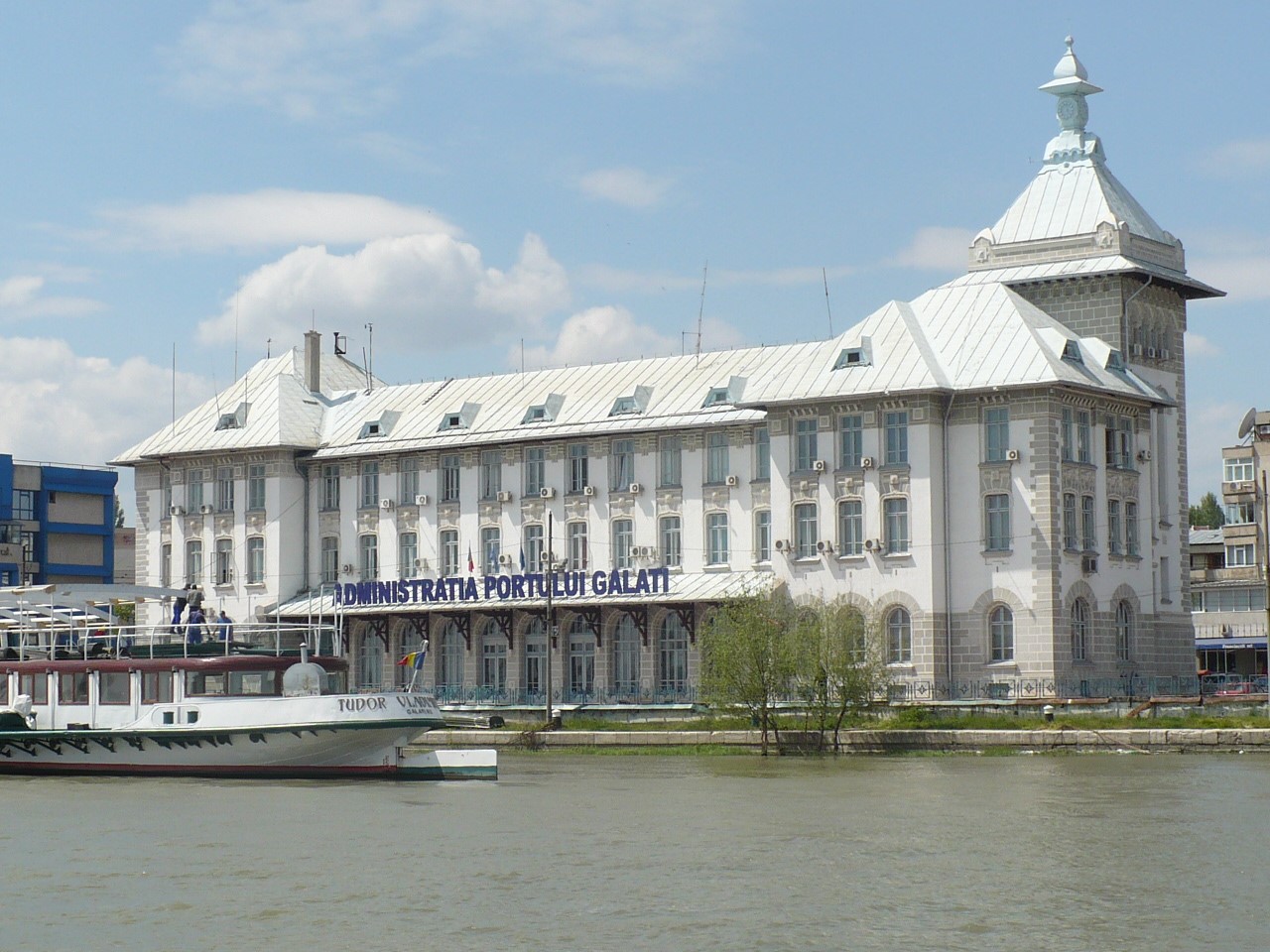
You are one of the Romanian representatives in ESPO’s General Assembly. In your opinion, what is the importance and added value of cooperation between European ports?
First of all, it is a real chance to be member of ESPO as it allows us to be in touch with the latest news regarding port activity development. Being an ESPO member has given us the opportunity to find out and design several projects with added value for the port activities in Galati. Also, we established many contacts with European ports and learned best practices from the activities of these ports. In my opinion, the most important added value of the cooperation between European ports is the ability to focus on creating added value for people, stimulating innovation and promoting sustainable models that will generate growth and employment.
The candidate-Commissioner of Romania has been granted the portfolio of Transport in the new European Commission. Do you have a message for the new Commissioner?
We are confident that the next Romanian Commissioner will promote the most reliable agreements and legislation in order to resolve the existing barriers in transport at EU level.
We think that an increased attention should be paid to the development of inland ports, such as Galati Port. In line with this idea, we believe that the following direction should be followed :
- Promoting incentive policies to increase traffic and promoting the importance of inland ports on the Maritime Danube;
- Supporting Romania in order to create navigable conditions on the Maritime and River Danube, throughout the year;
- Preparing and implementing environmental protection policies for the maritime Danube by applying the Stamp Duty.
We are positive that the following aims will also remain a priority of the Transport Commissioner:
- No more conventionally-fuelled cars in cities;
- 40% cut in CO2 emissions from maritime bunker fuels;
- 50% shift of freight journeys greater than or equal to 300 km from road to rail and to waterborne transport, majority of medium‑distance travel completed by rail;
- Completion of the European high-speed rail network;
- Completion of the Trans-European transport network;
- Progress towards zero road‑transport fatalities.
Related documents
No attachments.
